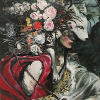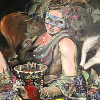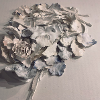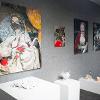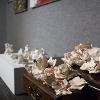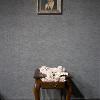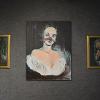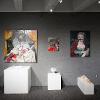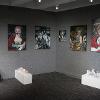On going painting project 2019- painting figures from <Edwards Place>
"When Helen Edwards came to Illinois as a young bride in 1840, She had almost no experience in running a household; she remembered shedding many a tear over her first attempts at cooking. Over the years, through trial and error, and with help from friends and advice from cookbooks, Helen became an excellent cook and hostess whose guests included Abraham Lincoln, Stephen Douglas, John T. Stuart, Stephen Logan, and other leading lights of Springfield.
Helen faced challenges in her kitchen that 21st century cooks can hardly fathom. Her cooking was done over a wood-burning, cast-iron stove with no method of accurately regulating the temperature.
Without electrical refrigeration, fruits and vegetables were canned and stored in the cellar under the kitchen; that is if vegetables could be had at all, for an unlucky drought could wipe out a season's worth of long-anticipated produce. Although food was available for purchase from the market, it was completely unprocessed: a chicken dinner began by plucking the feathers from the bird.
Still, as a woman of means, Helen had luxuries in her kitchen. Fragments of bottles recovered from an early Edwards Place privy indicate that the family was purchasing prunes and olive oil imported from France. Helen's letters frequently mention oysters and lemons, both expensive treats in central Illinois. For large parties she hired the local confectioner, Willian Watson, to create his signature pyramid of macaroons covered in spun sugar, which was the toast of legislative parties in antebellum Springfield.
Within a decade of her marriage, Helen was able to hire a cook to take over kitchen duties. Having a live - in cook seems like an incredible luxury to 21st century readers, but cooks were common in upper-middle-class, 19th-century households. Nearly every family who owned a house employed at least one hired girl to help with the cooking and cleaning. These hired women, often German or Irish immigrants, were not always the panaceas that their employers had anticipated. In the 1860s, Helen's cook, Bridget, seems to have been something of a headache, causing Helen to complain that she "is careless and wasteful." In 1868, Helen lamented, "it makes me feel annoyed, and anxious, to pay such enormous wages and have so little done satisfactorily, and withal endure such willful extravagance, as Bridget continually is guilty of in all her work. I must look for another and at less wages." Sometime later Helen did hire a new cook, whom she described as "A fine German woman, who represents herself as a splendid cook, having lived with Kings - Princes, Lords, (all misters I reckon) but cannot understand a word of English, except Bread, and Pies." Though the new cook was relief, Helen was not entirely absolved from duties in the kitchen. When the household was between cooks or when the regular cook was temporarily absent, Helen had to roll up her sleeves and do the cooking herself. And, even when the cook was present and working hard, a lady of the house, such as Helen, were expected to know their way around the kitchen so they could effectively manage their employees."
Eating with the Edwards Family
Erika Holst
The Springfield Art Association of Edwards Place, June, 2011
The cook, work in progress
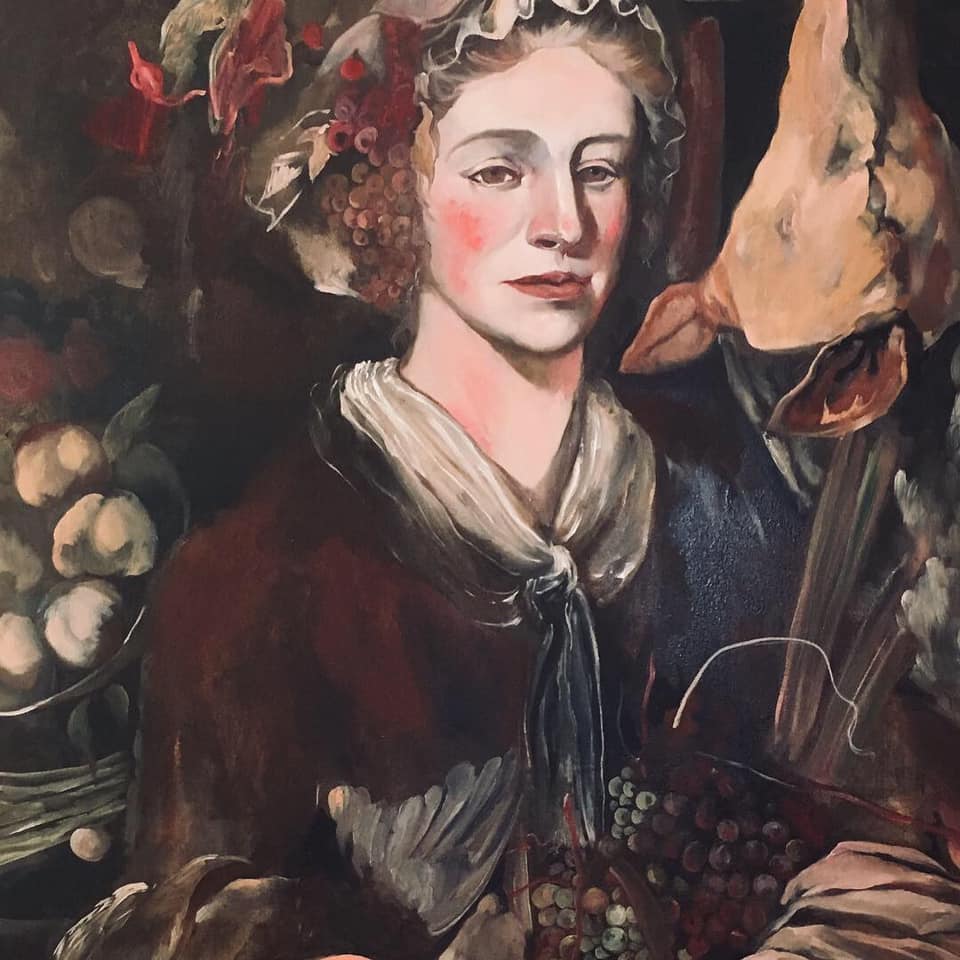
Portrait Series -Animal, Animality, Animagus
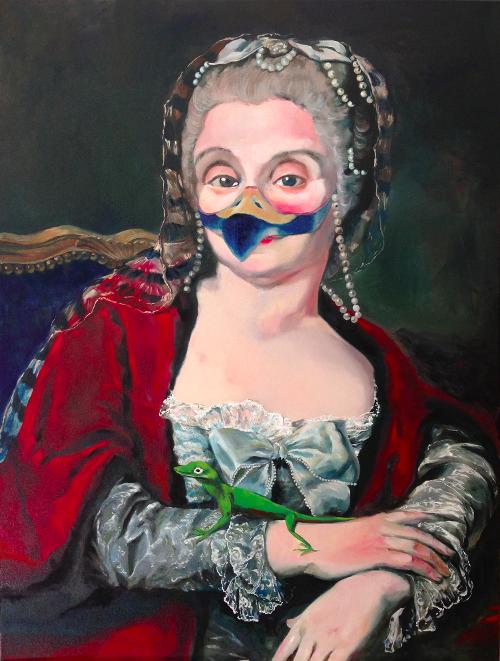
Queen of ribbons ; Madam Geoffrin
36 x 40
Oil on Canvas, 2016
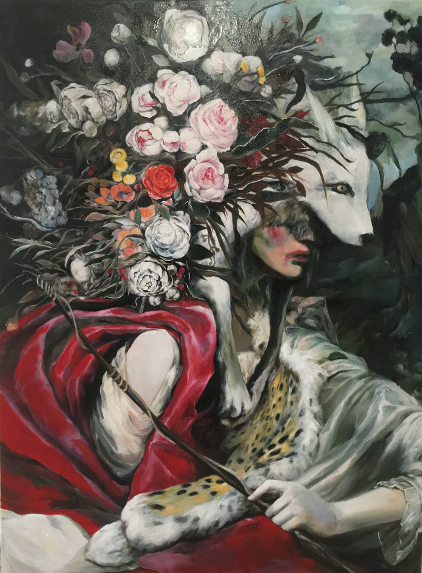
Ace of Wands; Diana with her wolf
Oil on Canvas, 2017
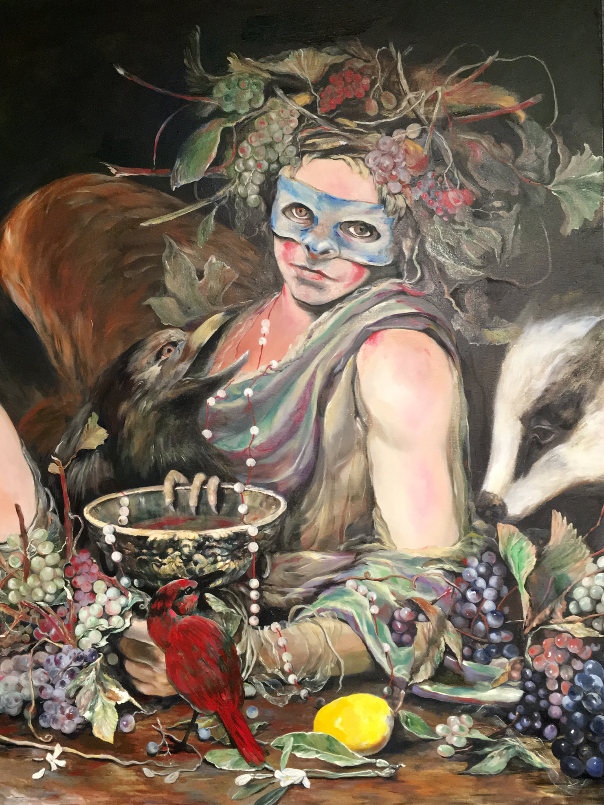
Page of Cups; Bacchus
Oil on Canvas, 2017
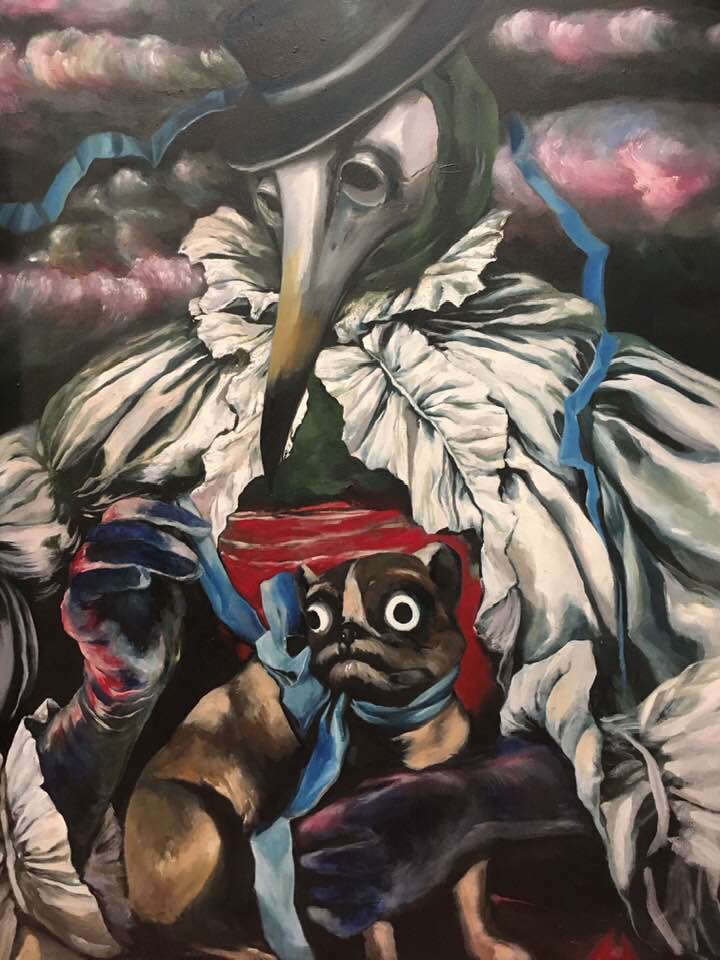
King of Ribbons
Oil on Canvas, 2016
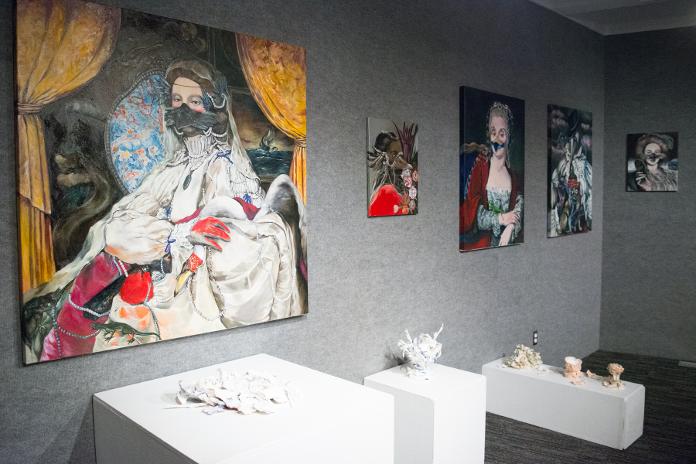
Image from Exhibition, <anima-animus-persona>
<anima-animus-persona>
Oct. 15 to Nov.9. 2018 in Gallery 336B of the ICC Academic Building
Opening Reception & Artist Talk
October 15 @ 12:00 pm - 2:00 pm
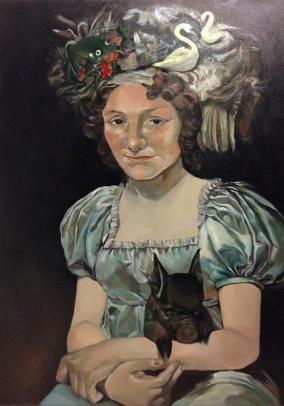
The Queen; A Wife of artist
36 x 40 inch, Oil on Canvas, 2015
I have been interested in how identity is formed by many layers. some are perceived by society and some come from the one's collective experiences. In this series of work, I focus on the complexity of female identities. The stigma surrounding female sexuality by society has affected women's identities for long time. As the result, there is an external personality commonly known as female attitude, or female persona.
Most women in my paintings wear Mask, and it means that they truly understanding what is their persona what is expected by the others. sometimes it can be a shield, sometimes a spear.
Generally, multi layered stories from this female persona are often ignored and simplified, such as emphasized a weakness of the victim, mother's endless maternal love, a virgin's pureness. It is interesting to me that female stories considered not having powerful energy as any man's narrative had, even though women have been known as much more complex in man dominated society. As a result, I was interested in imagining the hidden story of women, which may not necessarily be coherence and unified, since their narrative has a power from a reaching singularity by a conflict of many different desires.
When a powerless girl get hurt in movies, fictions, and many other stories which have been exist human history, this event has been used as a device for a moment of revealing a hero. However, it had been overlooked that this moment also was for the girl to be empowered and redefining 'womanness'. In my series of work, I wanted to portrait one's multi-layered emotions and narratives by posing with many symbols and supporting by references from historical paintings.
On-site painting performance at FUZE , NEXT Art Fair, Art Chicago, Chicago, IL, USA, 2010
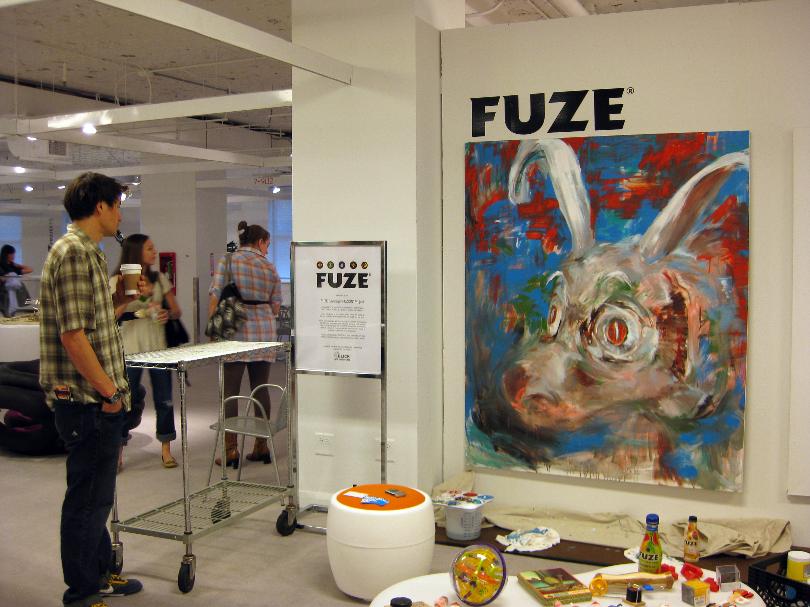
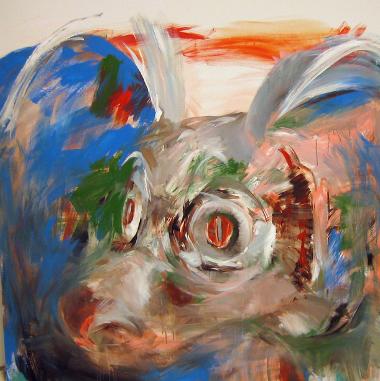
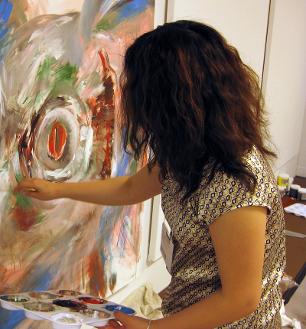
Raft of the Medusa
40x64 inch, Oil on canvas 2008
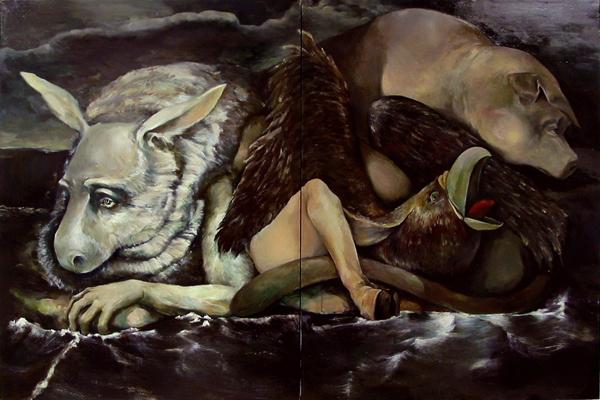
King of Quarter
18x24 inch
Oil on Canvas 2008
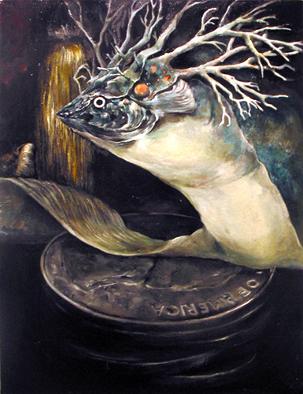
Persona portrait study, oilpainting, 2008
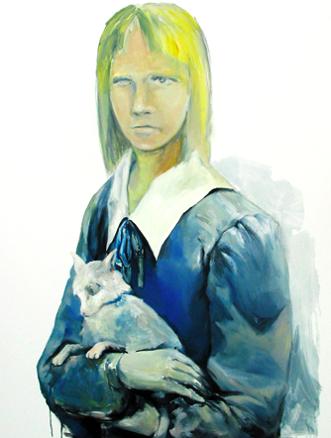
Saint George and the dragon, portrait study, 2008
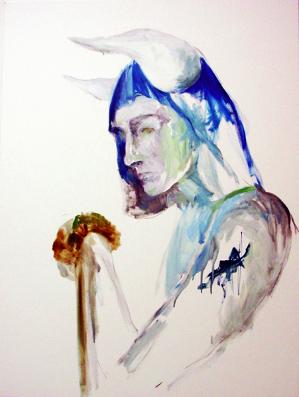
Botanical Blue, Painting on thefound object, Oil painting, 2007
